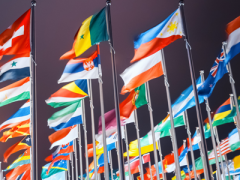Sharing the reduction effort to limit global warming to 2 degree C
In order to stabilise long-term greenhouse gas concentrations at 450 ppm CO2 eq or less, developed countries as a group should reduce emissions by 25 to 40% below 1990 levels, by 2020, while developing countries need to reduce by around 15 to 30%, relative to their baseline levels, according to the IPCC and our earlier work.
Abstract
These studies concerned different allocation approaches, according to equity principles. We have analysed the effect of the assumed global emission cap in these studies in more detail, and concluded that for developed countries the original reduction range of 25 to 40%, by 2020, is still within the average range of all studies, but does not cover it completely. Comparing the studies shows that when assuming global emission cap of 5 to 15% above 1990 levels, by 2020, this generally leads to more stringent reduction targets than when global emission cap of 20 to 30% above 1990 levels are assumed. For developing countries, the reduction range of 15 to 30% below their baseline levels, by 2020, corresponds to a 70% increase on the 2006 level, and a 140% increase on the 1990 level. Reducing deforestation emissions by 50% below baseline levels by 2020, may relax the emission reductions for either group of countries; for developing countries by about 7% or for developed countries by about 15% (but not for both).
Authors
Specifications
- Publication title
- Sharing the reduction effort to limit global warming to 2 degree C
- Publication date
- 9 May 2010
- Publication type
- Publication
- Magazine
- Climate Policy, Volume 10, Number 3: 247-260(14)
- Product number
- 92493




